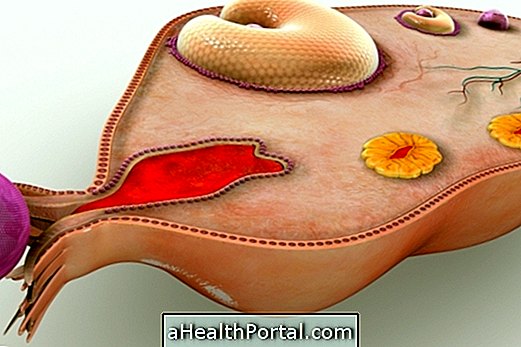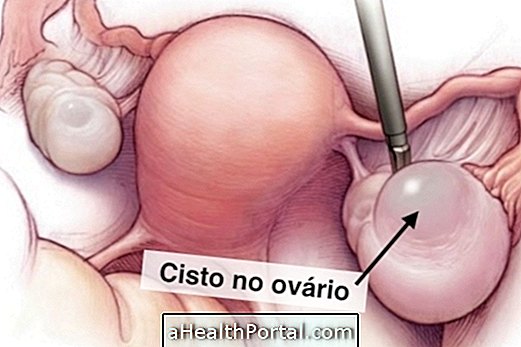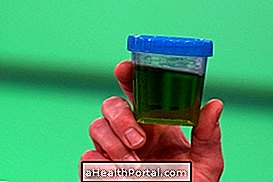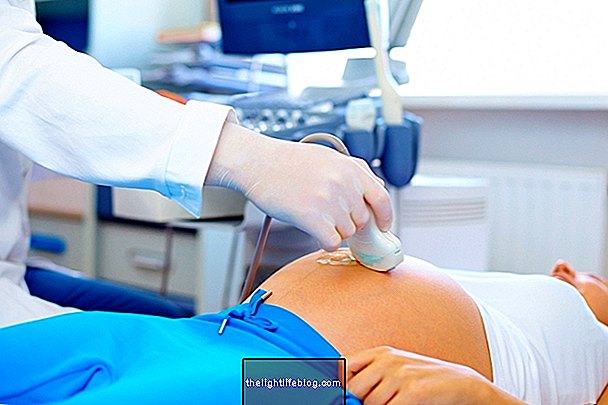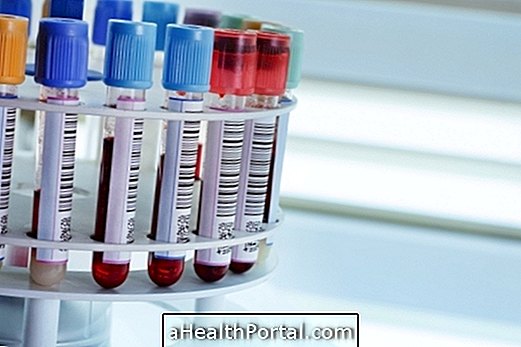Toxoplasmosis is a disease transmitted by soil, food, water and animal feces contaminated, which can cause serious changes in the baby when the mother is contaminated during pregnancy. Toxoplasmosis is also known as the 'cat disease' because it is a host of toxoplasma, although it does not suffer from its effects.
Toxoplasmosis in pregnancy is usually asymptomatic for the mother but can be very dangerous for the baby. This disease is caused by the protozoan Toxoplasma gongii, which may be present in raw or undercooked meat, contaminated raw food and soil contaminated with feces of cats that have toxoplasmosis.
Most women develop lifelong immunity, and about 1/3 of the world's population is immune, but when a woman is first infected with this protozoan during pregnancy, it can affect the baby causing severe changes such as blindness or mental retardation.
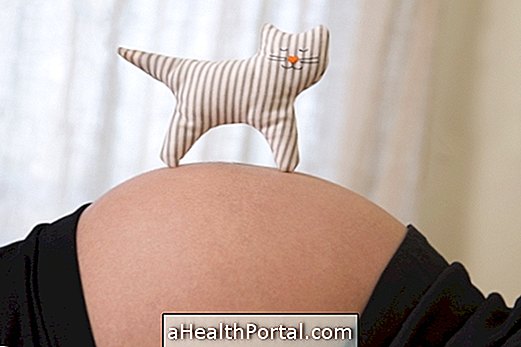
Symptoms of Toxoplasmosis in Pregnancy
Usually people are contaminated with toxoplasmosis without symptoms, but when contamination occurs during pregnancy, the woman may have symptoms such as:
- Low fever;
- Malaise;
- Inflamed tongues, especially in the neck and
- Headache.
Even if the pregnant woman does not present symptoms, an examination is always carried out to determine if the woman is immune, which means that she has already had contact with T. Gondi, and can not be contaminated again, or if she is not immune, which represents the risk of being contaminated during this phase. This test is done every trimester of gestation, during prenatal care.
If it is discovered that the woman has been recently infected, and possibly during pregnancy, the obstetrician can request an examination called amniocentesis to check whether the baby has been affected or not. Ultrasonography is also needed to assess whether the baby was affected, especially at the end of gestation.
How contamination happens

Contamination with T. gongii can occur in the following ways:
- When eating food contaminated with the faeces of the cat that has T. Gongii ;
- When accidentally ingesting the parasite, after fiddling with the sand box of the infected cat;
- When consuming raw or uncooked meats that are contaminated;
- When consuming raw fruits and vegetables contaminated. Washing these foods properly usually eliminates the parasite.
The cycle of contamination occurs when the cat eats raw meat contaminated with protozoan cysts. Then the parasite comes out from inside the cysts and replicates inside the body of the animal, where the ooscisto that forms the protozoan originating in the feces of the cat originates. Cat feces can contaminate the soil and water, which can contaminate other animals, fruits and vegetables.
Domestic cats raised only with ration and never leave home, are much less likely to be contaminated, compared to those who live on the street and feed on everything they find on the way.
Toxoplasmosis risks in pregnancy
Toxoplasmosis is only severe and affects the baby when the woman is infected during pregnancy, especially in the third trimester of gestation. During the first trimester of pregnancy, the risk of the baby being infected is lower, but the risk of injury is greater. Thus, if it is discovered that the woman has toxoplasmosis the doctor indicates the taking of antibiotics to protect the baby.
The risks of toxoplasmosis in pregnancy are:
- Spontaneous abortion;
- Premature birth;
- Fetal malformations;
- Low weight at birth;
- Death at birth.
After birth, the risks to the baby born with congenital toxoplasmosis are:
- Changes in baby's head size;
- Strabismus, which is when one eye is not in the right direction;
- Inflammation of the eyes, which may lead to blindness;
- Intense jaundice, which is yellowed skin and eyes;
- Liver enlargement;
- Pneumonia;
- Anemia;
- Carditis;
- Convulsions;
- Deafness;
- Mental retardation.
Toxoplasmosis may also not be detected at birth, and may manifest months or even years after birth.
Treatment for toxoplasmosis in pregnancy
Treatment for toxoplasmosis in pregnancy is done through the use of antibiotics to treat the mother and reduce the risk of transmission to the baby. Antibiotics and duration of treatment will depend on the stage of pregnancy and the strength of your immune system. Antibiotics that may be used include Pyrimethamine, Sulfamadiazine, Clindamycin and Spiramycin. If the baby is already infected, his treatment is also made with antibiotics and should be started soon after birth.
How to prevent

The precautions to avoid toxoplasmosis in pregnancy are:
- Cook the meat well and wash the hands carefully after preparing;
- To sanitize fruits and vegetables that will be consumed raw: one must use water and sanitary water, in proportion of 1 tablespoon of sanitary water for 1 liter of water. The vegetables should be immersed in this mixture for 30 minutes and then rinsed under running water;
- Consume drinking water;
- Keep raw foods separate from cooked foods to avoid contamination;
- Use different boards and knives for raw meat and for fruits and vegetables;
- Avoid eating raw or undercooked meats in restaurants;
- Do not eat salad in restaurants;
- Wash your hands thoroughly after touching the cat litter box;
- Take pets to the veterinarian to evaluate the presence of diseases and treat them;
- Avoid contact with cat feces and if you have to clean them, wear gloves. At the end of the day, thoroughly wash your hands and gloves;
- Avoid contact with abandoned cats;
- If growing gardens, wear gloves to protect yourself from contaminated soil.
However, even following these tips, the ideal is that the woman should perform a blood test to check for the presence of toxoplasmosis and start the appropriate treatment.
